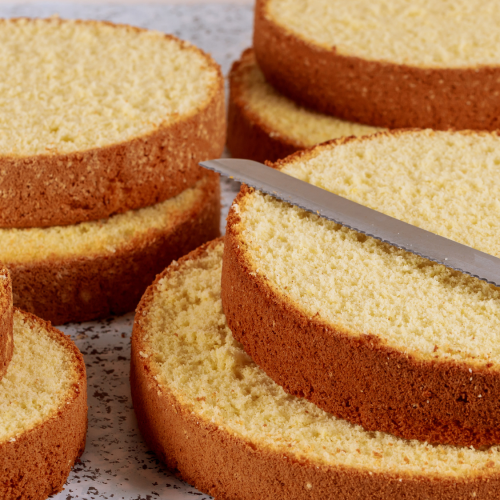TABLE OF CONTENTS
Once used for your recipes, Sourdough can be stored in 3 ways, depending on how long you wish to keep it.
First, you must evaluate whether you want it available EVERY DAY or prefer to use it occasionally. In the first case, you will need to refresh the sourdough daily, while in the second case, you can store it in the refrigerator or freezer for several days. However, I suggest scheduling the cycle of 3 refreshments at least once every 15-20 days to avoid diluting the yeasts and causing them to lose their strength.
HOW TO STORE SOURDOUGH AT ROOM TEMPERATURE (FOR 24 HOURS)
Storing the sourdough starter at room temperature is crucial for two reasons: if you need to use it every day (although this is unlikely at home) or if you need to refresh it after several days in the fridge.
If the above describes your need, you must refresh the mother yeast EVERY DAY and store it at room temperature (19°C to 20°C – 66° to 68°F) for 24 hours. Whether you store your sourdough in the water or tied-up, detailed instructions are on the page dedicated to How to Feed Sourdough Starter.
STORAGE OF SOURDOUGH IN THE FRIDGE (FOR 7-10 DAYS)
I recommend this type of storage for home use because it allows you to keep the Sourdough for about one week without causing an excessive loss of strength.
After the bath (as explained above), squeeze and knead:
- 1kg starter
- 2kg of Bread Flour
- 800gr water at 30°C (86°F)
Knead it, roll it to 1-2 cm of thickness, roll it up, and soak it in cold tap water (about 19°C (66°F))
Leave the Sourdough at room temperature until it comes to the surface. Then, place it in the fridge at +4°C (39°F) for 7-10 days.
Sourdough does not absorb odors that may be in the refrigerator, so you can leave it uncovered.
Evaluating the fridge’s temperature is crucial because if it is too far from +4°C, the sourdough’s shelf life will be reduced to 4-5 days.
To reactivate the Sourdough starter, leave it at room temperature for 24 hours and proceed with the regular daily refreshments for at least 4-5 days before using it in the recipe.
HOW TO STORE THE SOURDOUGH IN THE FREEZER (FOR MORE THAN 1 MONTH)
To further extend the period of preservation – more than 1 month – I suggest to FREEZE your Sourdough Starter, moving as follows:
After soaking the Sourdough as explained above, squeeze it and knead it following these proportions:
- 1 kg starter
- 2 kg of Bread Flour
- 800 g water at 30°C (86°F)
Knead all the ingredients, roll the dough to 1-2 cm of thickness, roll it up, and soak it in cold tap water at 19°C/20°C (66°F – 68°F). Leave at room temperature until the Sourdough rises to the surface and then place in the refrigerator, uncovered, at +4°C (39°F) for 24 hours. Put it in the freezer the next day and wait for the entire mass to completely freeze before covering the Sourdough with a plastic wrap sheet.
To reactivate the Sourdough, it is crucial to avoid temperature shocks. To do this, please place it in the refrigerator for 24 hours. Then, put it at room temperature for 24 hours or until the Sourdough rises to the surface again. Finally, you can proceed with standard refreshments.
Discover more about Sourdough Starter
your QUESTIONS ABOUT SOURDOUGH STARTER
Suppose you do not use Sourdough very often. In that case, the most rational solution is to store it in the refrigerator and refresh it every 5/7 days. For periods longer than 1 month, you can keep the yeast in the freezer. In both cases, it will be necessary to refresh the yeast with specific refreshers.
One way to recycle it is to let them dry it first, then bake them in an oven at 100°C (212°F) for about 40/60 minutes and then pulverize them in a mixer. The resulting powder can be added to bread and pizza dough (about 10g/kg of flour) to enhance the acidic note.
You can use a good quality Bread flour with around 14% of proteins. All-purpose flour is not the right choice as it is not rich enough in proteins and gluten.
If you store the Sourdough at room temperature, it must be refreshed every day. Otherwise, you can refresh it every 5/7 days and store it in the refrigerator.
If properly stored at a (stable) temperature around +4°C (39°F), you can keep the Sourdough in the refrigerator for up to 7 days. Obviously, you will refresh the Sourdough before placing it in the fridge.
If Sourdough is left at room temperature, it should be refreshed every day. If you decide to keep it in the refrigerator, you can refresh it every 5-7 days.
The ideal proportion is for the water to be about 3 times the amount of starter: 1kg of yeast should be soaked in 3 liters of water.
Suppose you happen to lose a lot of Sourdough during the bath. The best solution is to collect as much as possible and make 2 to 3 refreshments in a row to regain the right mass. How to Feed the Sourdough Starter
Suppose you happen to lose a lot of Sourdough during the bath. The best solution is to collect as much as possible and make 2 to 3 refreshments in a row to regain the right mass. How to refresh Sourdough
Sourdough cannot be used directly from the fridge. Once taken out, it must be left at room temperature for 24 hours and then fed daily for 4 to 5 days before using it in your recipe.
The ideal temperature for storing yeast is 19°C (66°F)with a margin of +/- 2°C.
It depends; the final temperature of the dough should be around 26°C (78°F). You can use this simple formula (which works only with °C) and found out the right water temperature to use:
55 – Flour temp (°C) – Room temp (°C)
I recommend storing at least 700g of yeast to not lose too much during the bath. However, to limit the use of flour, you can keep the Sourdough in the refrigerator and refresh it every 5-7 days.
If the Sourdough rises to the surface too early during the bath, it is a clear sign that It is too weak.
To rebalance the acidities, simply refresh it with a sourdough: flour ratio of 1:0.8 (1kg sourdough and 800g bread flour).
Most likely, It is too acid and should be rebalanced by refreshing with a yeast: flour ratio of 1:1.2 (1kg yeast to 1.2kg bread flour).
If your Sourdough smells too acidic, it means it has developed excessive acidity. To rebalance it, first, you have to identify whether the cause of the excess acidity is lactic or acetic. Then, you can refresh it according to the specific case, as explained in this article about the most common problems of Sourdough.

























33 comments about “Come conservare il Lievito Madre”
Ciao! vorrei conservare il lievito madre in frigorifero per utilizzarlo ogni 5/6 giorni. Uso le proporzioni di farina e acqua indicate nell’articolo o devo modificarle? Perché quelle dosi si riferiscono ad una conservazione per 7/10 giorni.
Inoltre quando lo tolgo dal frigo per rinfrescarlo devi lasciarlo un po’ a temperatura ambiente o posso procedere subito? Lo stesso per rimetterlo in frigo, devo lasciarlo un po’ a t.a. o lo metto subito in frigo?
Grazie
Ciao Donatella,
la tua è un’ottima domanda, perché molto comune.
Se lo scopo è fare nel pane /pizza ogni settimana, allora la soluzione migliore è usare il Levain, ovvero il lievito liquido che si conserva nel barattolo.
Il licoli ti permette di conservarlo in frigo, prelevarne la quantità che ti serve ed usarlo nella ricetta, rinfrescandolo 1sola volta.
Ecco come fare: HOW TO FEED THE LEVAIN
La conservazione in frigo del Lievito Madre solido è una tecnica che ti permette di conservare il lievito per più giorni, ma NON PUOI USARE IL LIEVITO DIRETTAMENTE DOPO AVERLO TOLTO DAL FRIGO, perché sarà piuttosto indebolito.
Una volta tolto dal frigo, devi lasciarlo a Temp ambiente per 24ore e poi rinfrescarlo. Da questo punto, dovrai prevedere almeno 2giorni di rinfreschi giornalieri e poi fare i consueti 2 o 3 rinfreschi preparatori, prima di usare il lievito madre nella ricetta.
A presto!
Ok. Ma posso ora “trasformare” il mio lievito madre solido in licoli? Se si come? Grazie tante
Ciao Donatella,
ti lascio il link della pagina in cui ti spiego come fare (lo troverai in fondo alla pagina):
A presto!
Ciao, volevo chiederti anche se rinfresco tutti i giorni consigli sempre il bagnetto prima?
In piu, io sto gestendo il mio lievito madre a 50% idratazione conservandolo in barattolo con pellicola bucata sopra.
Solo che dopo 3giorni in frigo è bello acido.
Quali sono i vantaggi di una conservazione in acqua?
Visto che comunque è piu lunga ai rinfreschi fra laminazione e il resto.
Grazie
Ciao Maria,
in questo momento sei in una fase intermedia, che non ti consiglio, tra lievito madre tradizionale (che devi idratare al 30%, se lo conservi in acqua, o al 40%, se lo conservi legato), ed il Licoli (che invece devi idratare al 100%).
Se opti per il Levain NON DEVI FARE IL BAGNETTO
Se invece preferisci gestire il Lievito Madre, allora ti consiglio di fare il bagnetto ad ogni rinfresco, anche se lo fai giornalmente.
Con il metodo in acqua, infine, avrai un lievito meno acido e più facile da gestire (perché l’acqua di aiuta a tamponare l’acidità); considera che la laminazione è un passaggio davvero raccomandato anche per il lievito legato!
A presto!
Ciao e complimenti per la tua professionalità e conoscenza che metti a disposizione. Una domanda da neofita: dopo che ho fatto i due bagnetti e atteso le 3 ore in cui viene a galla, il lievito madre va conservato con l’acqua in frigo? Grazie in anticipo e mi scuso per la domanda un po’ scontata…
Ciao Francesco,
i 2 o 3 rinfreschi da 3ore a 30°C servono solo quando devi preparare il lievito per usare nella ricetta.
Se invece non ne hai bisogno e vuoi solo conservarlo, allora puoi rinfrescare il lievito come descritto qui sopra e poi scegliere se lasciarlo a temperatura ambiente (ed allora dovrai rinfrescarlo dopo 24 ore), oppure metterlo in frigorifero e rinfrescarlo dopo 5/7 giorni!
A presto!
Stessa domanda please!!!e’ tutto chiaro ma non è specificato se il lievito poi va conservato in frigo con o senza acqua!!Forse x voi è scontato ma x noi neofiti noGrazie!
Ciao Giuseppe!
Ti confermo che in tutte le fasi di conservazione devi sempre tenere il lievito in acqua!
A presto!